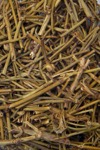Notice (8): Undefined index: geoplugin_countryCode [APP/Controller/AppController.php, line 94]Code Context$Country_code = '';if($ip_data && $ip_data['geoplugin_countryCode'] != null) {$Country_code = $ip_data['geoplugin_countryCode'];$client = null $forward = null $remote = '216.73.216.24' $ip = '216.73.216.24' $ch = unknown $ip_data_in = '{ "geoplugin_status":429, "geoplugin_message": "Blacklisted due to sending too many requests to geoplugin.net. Consider whitelisting your IP or domain", "geoplugin_url": "https://www.geoplugin.com/premium/" } ' $ip_data = [ 'geoplugin_status' => '429', 'geoplugin_message' => 'Blacklisted due to sending too many requests to geoplugin.net. Consider whitelisting your IP or domain', 'geoplugin_url' => 'https://www.geoplugin.com/premium/' ] $Country_code = ''App\Controller\AppController::initialize() - APP/Controller/AppController.php, line 94 App\Controller\ProductsController::initialize() - APP/Controller/ProductsController.php, line 31 Cake\Controller\Controller::__construct() - CORE/src/Controller/Controller.php, line 273 ReflectionClass::newInstance() - [internal], line ?? Cake\Http\ControllerFactory::create() - CORE/src/Http/ControllerFactory.php, line 47 Cake\Http\ActionDispatcher::dispatch() - CORE/src/Http/ActionDispatcher.php, line 91 Cake\Http\BaseApplication::__invoke() - CORE/src/Http/BaseApplication.php, line 235 Cake\Http\Runner::__invoke() - CORE/src/Http/Runner.php, line 65 Cake\Http\Runner::__invoke() - CORE/src/Http/Runner.php, line 65 Cake\Http\Middleware\CsrfProtectionMiddleware::__invoke() - CORE/src/Http/Middleware/CsrfProtectionMiddleware.php, line 104 Cake\Http\Runner::__invoke() - CORE/src/Http/Runner.php, line 65 Cake\Http\Runner::run() - CORE/src/Http/Runner.php, line 51 Cake\Routing\Middleware\RoutingMiddleware::__invoke() - CORE/src/Routing/Middleware/RoutingMiddleware.php, line 168 Cake\Http\Runner::__invoke() - CORE/src/Http/Runner.php, line 65 Cake\Routing\Middleware\AssetMiddleware::__invoke() - CORE/src/Routing/Middleware/AssetMiddleware.php, line 88 Cake\Http\Runner::__invoke() - CORE/src/Http/Runner.php, line 65 Cake\Error\Middleware\ErrorHandlerMiddleware::__invoke() - CORE/src/Error/Middleware/ErrorHandlerMiddleware.php, line 96
| Scientific: | Ephedra sinica |
|---|---|
| Other: | Ma Huang |
| Family: | Ephedraceae |
Ephedra has been used in both eastern and western medicine for thousands of years. The active constituents (ephedrine and pseudoephedrine) act as sympathomimetics: like adrenalin, they stimulate the sympathetic nervous system, but the effects are milder and last hours.
Ephedra is primarily used as a decongestant for ailments of the respiratory system associated with mucous and phlegm, including colds, flus, seasonal allergies and asthma. Ephedra causes vasoconstriction of the capillaries of the mucous membrane, thus reducing the influx of water in the interstitial fluid that causes congestion. It also acts as a bronchodilator to open the airways, improving gas exchange. Most " day-time " sinus and cold medicine contain synthetic forms of ephedrine and pseudoephedrine.
Ephedra is a potent herb and should be used with caution. In addition to the respiratory system, ephedra stimulates metabolism resulting in weight loss. However, it is banned as a weight loss supplement in many countries because it also stimulates the cardiovascular system, resulting in increased heart rate, hypertension and even death in rare circumstances, when used incorrectly. Ephedra is contra-indicated with certain conditions and medications.
Respiratory
• respiratory complaints with copious amounts of phlegm
- bronchitis
- acute asthma
- whooping cough
- croup
- colds
• constricted breathing
• nasal congestion associated with infection or allergies
- sinusitis
- allergic rhinitis
• otitis media
Endocrine
• weight loss †
• Sympathomimetic
• Decongestant
• Antiallergic
• Stimulant
• Antispasmodic
• Diuretic
• Diaphoretic
• Astringent
• Alkaloids (Ephedrine )
• Tincture (1:4 in 45% EtOH): 1-4 ml tid
• Decoction (dried herb): 1-2 tsp tid
Side effects: Tachycardia, insomnia, decreased appetite, dry mouth, tremors.
Pregnancy & lactation: Avoid use.
Caution: With the following conditions:
• anorexia
• glaucoma
• diabetes
• cardiovascular disease
• hyperthyroidisim
• anxiety
• insomnia
• arrhythmias
• benign prostatic hyperplasia (BPH)
†Note: not allowed in weight loss supplements because of
• MAO inhibitor • can potentiate action and cause hypertensive crisis
• Blood pressure medication
Barnes J, Anderson LA, Phillipson JD. Herbal Medicines, 3rd ed. London: Pharmaceutical Press, 2007.
Bone K. Principles and Practice of Phytotherapy. Edinburgh: Churchill Livingstone, 2000.
Bone K. A Clinical Guide to Blending Liquid Herbs: Herbal Formulations for the Individual Patient. St Louis, MO: Churchill Livingstone, 2003.
Brinker F. The Toxicology of Botanical Medicines, 3rd ed. Sandy, Oregon: Eclectic Medical Publications, 2000.
Felter HW, Lloyd JU. King's American Dispensatory. 1898. http://www.ibiblio.org/herbmed/eclectic/kings/main.html. Accessed: August 19, 2006.
Hoffman D. Medical Herbalism. Rochester, Vermont: Healing Arts Press, 2003.
Weiss RF. Herbal Medicine. Beaconsfield, England: Beaconsfield Publishers Ltd, 1988.
Williamson EM, ed. Major Herbs of Ayurveda. Edinburgh: Churchill Livingstone, 2002
Disclaimer: This content is subject to change. The information is intended to inform and educate; it does not replace the medical evaluation, advice, diagnosis or treatment by a healthcare professional. www.nhpassist.com © 2014 NDAssist Inc. and/or its affiliates. All rights reserved.

|
Ephedra " Ma Huang "
SummaryEphedra has been used in both eastern and western medicine for thousands of years. The active constituents (ephedrine and pseudoephedrine) act as sympathomimetics: like adrenalin, they stimulate the sympathetic nervous system, but the effects are milder and last hours. IndicationsSign in requiredActionsSign in requiredConstituentsSign in requiredPosologySign in requiredSafetySign in requiredInteractionsSign in requiredReferencesSign in required |
|---|